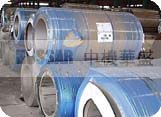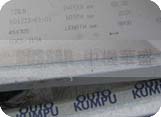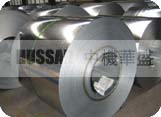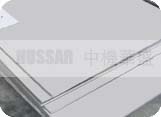| Hussar Machinery Equipment Import & Export Corp. |
|
|
| Home | Brief | Products | Materials UNS | Standard | Order Style | On Stock | Service |
| Alloy C276 (UNS N10276,2.4819) Alloy 276 (UNS N10276) is a nickel-molybdenum-chromium-iron-tungsten alloy which is among the most corrosion-resistant alloys currently available. The high molybdenum content imparts resistance to localized corrosion such as pitting. The low carbon minimizes carbide precipitation during welding to maintain resistance to intergranular attack in heat affected zones of welding joints. Alloy
276 also has good high temperature strength and moderate oxidation resistance
although the alloy will eventually form embrittling high temperature precipitates. General
Properties Alloy 276 also has good high temperature strength and moderate oxidation resistance although the alloy will eventually form embrittling high temperature precipitates. Alloy 276 has been available for several years and has been used in ASME Boiler and Pressure Vessel related construction. The alloy is covered in ASME Section VIII Divisions 1 and 2, in numerous product forms. The alloy is readily fabricated by welding using techniques similar to those used for austenitic stainless steels and other nickel base alloys. Precautions are advisable during fabrication because raising the low carbon and silicon contents of the material may adversely affect important properties. -------------------------------------------------- Applications ------------------------------------------------------------------ Standards ------------------------------------------------------------------ General
Corrosion Alloy 276 is used in wet chlorine service where it is one of the few materials able to resist this very aggressive environment. Alloy 276 is used in coal burning electric utility flue gas scrubbers where it is among the most corrosion resistant of materials. The following chart illustrates the excellent resistance of Alloy 276 compared to that of Alloy 316 in the “Green Death” simulated scrubber solution. ------------------------------------------------------------------ Chemical
Analysis C
Mn P S Si Cr Ni Mo W V Co Fe *By difference ------------------------------------------------------------------ Formability ------------------------------------------------------------------ Welding ------------------------------------------------------------------ Weld
Joints ------------------------------------------------------------------ Edge
Preparation ------------------------------------------------------------------ Post-Weld
Heat Treatment ------------------------------------------------------------------ Weld
Wire and Filler If there is a requirement to join Alloy 276 to materials such as other nickel-base alloys or stainless steels, and if the welds will be exposed to a corrosive environment, the welding electrodes or weld wire should be comparable in corrosion resistance to the more noble alloy. ------------------------------------------------------------------ Heat
Treatment Stress relief heat treatments are not effective, and full anneal should be conducted where stress relief heat treatment of other materials would be considered. Material to be heat treated should be clean and free of grease, oils, and other potential sources of carbon. ------------------------------------------------------------------ Descaling
and Cleaning Surface oxides formed during anneal or welding tend to deplete chromium very close to the scale-base metal interface. For this reason, acid treatments which remove surface metal under scaled surfaces are necessary for optimum corrosion resistance. The alloy content of the material makes descaling difficult. Stainless wire brushing or grit blasting is advisable, followed by immersion in a mixture of nitric and hydrofluoric acids and a thorough water rinse. |
|
Add:E2 Room 2317,Yuan Chen Xin Office Building,No.12 YuMin Road,ChaoYang District,Beijing,China,100029 Copyright 2010JING ICP No.10051934-1










